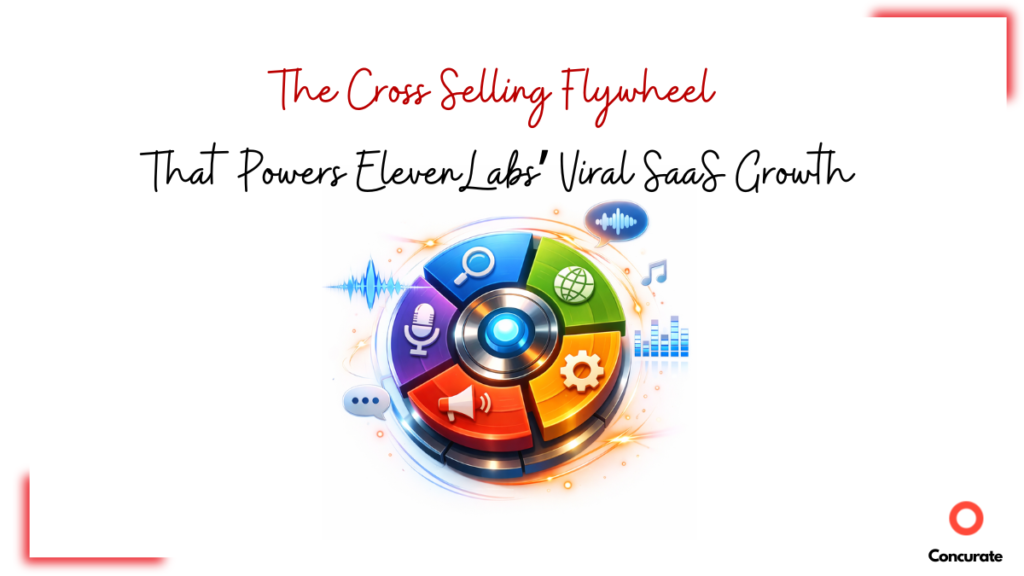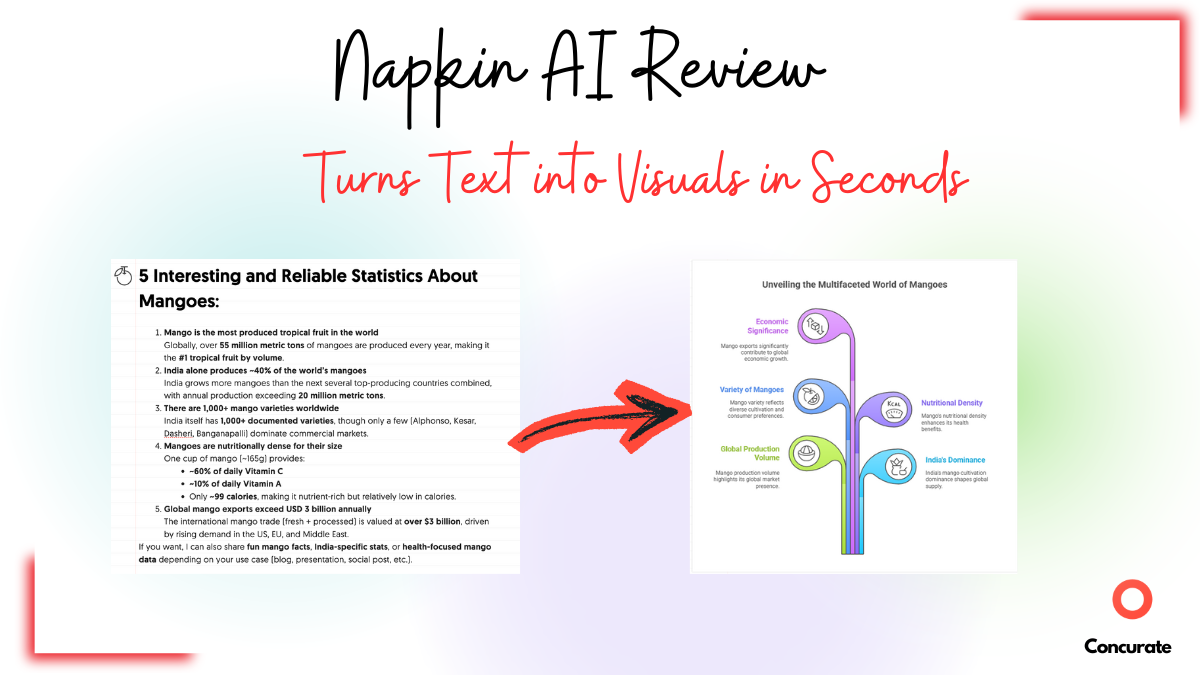| TL;DR: Most SaaS companies launch multiple products and treat them like silos. ElevenLabs did the opposite with a cross selling strategy that turns its entire line up into a self-sustaining flywheel. In this blog, we’ll reverse-engineer how they did it. You’ll see how each feature—Text-to-Speech, Voice Cloning, Dubbing Studio, APIs, and the Voice Library—feeds the next, how their content quietly connects those dots, and how this strategy keeps creators coming back. |
Every now and then, you stumble upon a SaaS company that feels different.
Most tools have a rhythm you can predict: a quick signup, a single aha moment, maybe one upsell email before the trail goes cold.
But ElevenLabs wasn’t like that.
When I first landed on their site, I expected a simple Text-to-Speech demo: press play, hear an AI voice, and move on.
Instead, that one click pulled me into a rabbit hole of creativity.
Want to make it sound like you?
Sure.
Want to translate it into Spanish?
Why not.
Want to monetize your voice?
Wait, I can do that too?
Somewhere between those steps, I realized something.

Source: GIPHY
ElevenLabs wasn’t selling products. It was building a journey where a product discovery leads to multi-product adoption.
How ElevenLabs’ Cross Selling Strategy Drives Growth Beneath the Surface
Once I started digging deeper, the pattern became obvious.
At first glance, ElevenLabs looks like a collection of AI audio tools. But look closer, and you’ll see something far more deliberate: a system where each feature feeds into the next.
This ties directly to what Jason Lemkin noted in his SaaStr analysis of ElevenLabs’ $300M meteoric rise: the best AI applications don’t just automate tasks — they reimagine entire workflows.
That’s the foundation of ElevenLabs’ growth flywheel.
As they stack, they form a loop where every new capability increases the value of what’s already there. The outcome isn’t a longer feature list. It’s a workflow that keeps getting better over time.
So this isn’t a product lineup.
It’s a flywheel in disguise.

Source: GIPHY
How the Cross Selling Strategy Becomes a Scalable Growth Flywheel
To understand the flywheel, zoom out and watch what actually happens as a user moves through the platform. The journey follows five distinct stages. Each one pulls the user deeper into the ecosystem by solving a need and opening up a new possibility.
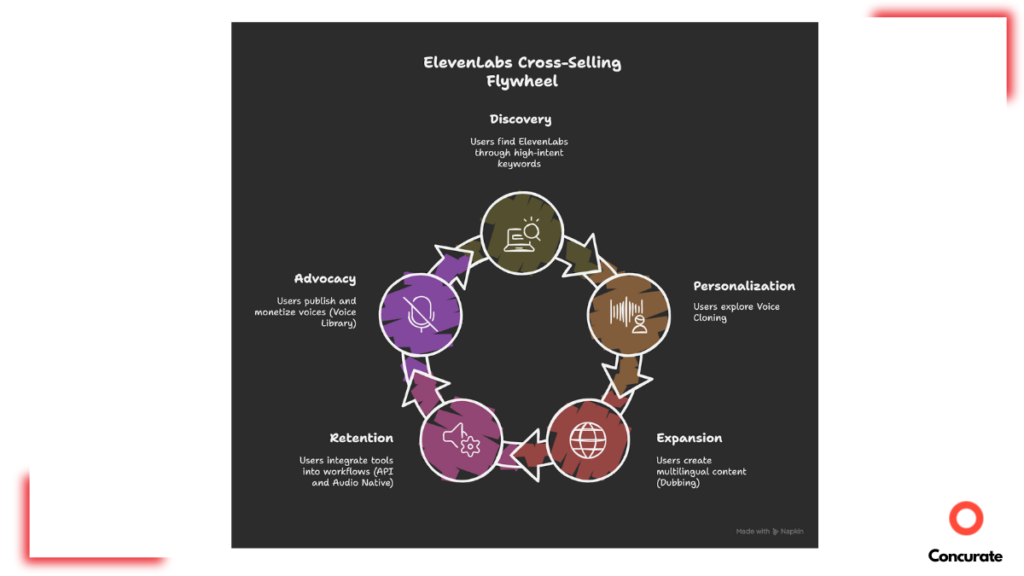
And here’s how it plays out in the real world:
1. Discovery: The Hook That Converts Search Traffic Into Exploration
Most users find ElevenLabs through high-intent keywords like “AI voice generator” or “text-to-speech.”From an SEO perspective, that’s their top-of-funnel magnet. The free demo gives instant value, with no gating or friction. From a growth standpoint, that’s product-led SEO done right: Google brings the traffic, the demo delivers the “aha” moment.
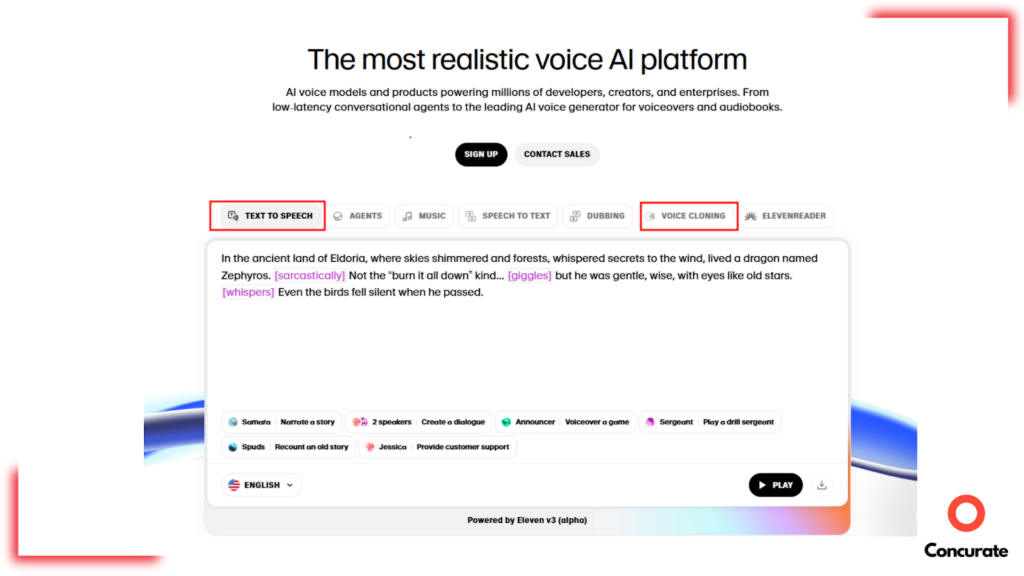
Source: ElevenLabs
2. Personalization: The Curiosity Loop That Converts Browsers Into Creators
This is where the magic begins. As users explore, they stumble onto Voice Cloning. The curiosity loop kicks in: “Can I make this sound like me?” That curiosity leads directly to Voice Cloning, arguably the most viral feature in their arsenal.
From a strategist’s view, this is where ElevenLabs transitions users from searchers to creators. They’ve built curiosity as a conversion mechanic, not just a design element.
3. Expansion: The Leap From One Voice to Global Reach
Now the journey gets creative. With Dubbing Studio, users can turn their voice into multilingual content. They can translate, localize, and share their creations with new audiences.
At this point, ElevenLabs has positioned itself not just as a tool but as a platform for reach and distribution. This unlocks use cases for content creators, educators, marketers, and more.
It also deepens investment. The more content users produce, the more valuable their voice assets become.
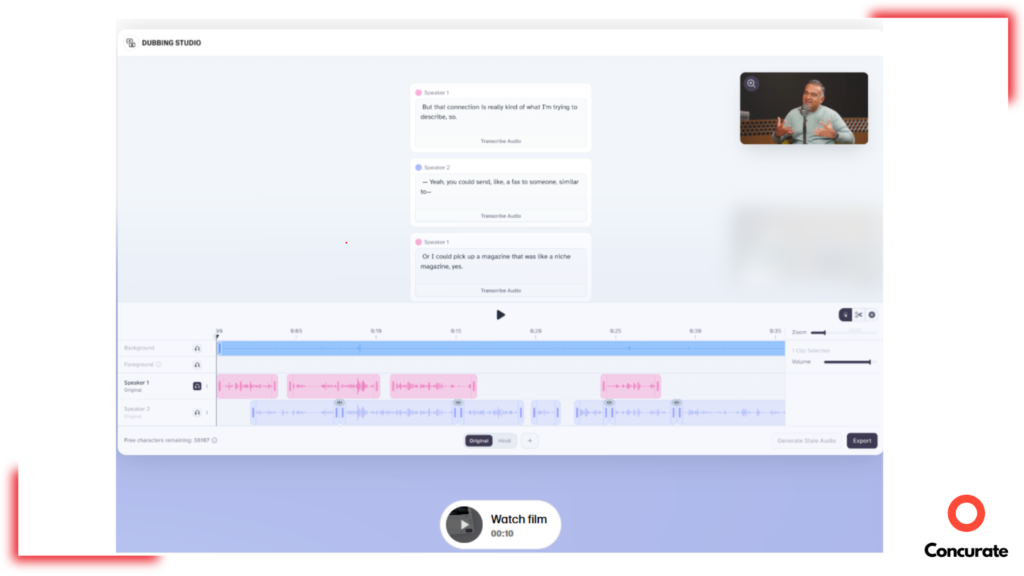
Source: ElevenLabs
4. Retention: The Invisible Glue That Keeps Users Coming Back
Once users are consistently creating, they start looking for ways to streamline and scale. That’s where ElevenLabs’ APIs and tools like Audio Native come in.
By integrating with existing workflows, ElevenLabs becomes part of the user’s ecosystem. This is the backend of the flywheel: low visibility, high stickiness. Users who reach this stage rarely churn because the product is now embedded in their daily routines.
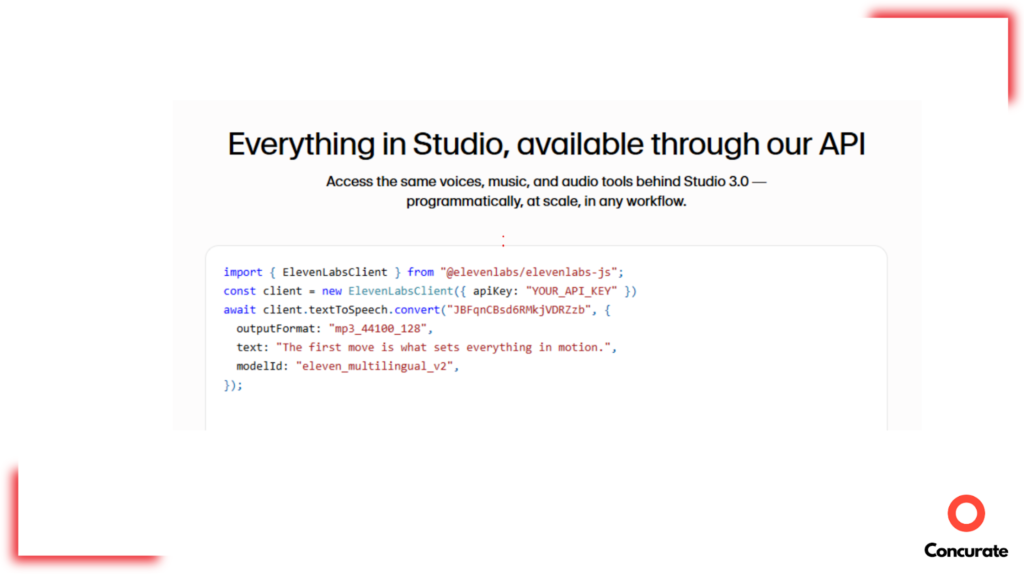
Source: ElevenLabs
5. Advocacy: The Flywheel Spark That Turns Users Into Marketers
The final stage closes the loop.
With the Voice Library, users can publish their voices, monetize them, and be discovered by others. It adds a social and financial layer that turns users into advocates.
More importantly, each published voice becomes SEO content—bringing new users into the ecosystem.

Source: ElevenLabs
That’s the ElevenLabs flywheel in motion.
Each product fuels another, and every user success powers the next wave of growth.
What Do the Numbers Reveal About ElevenLabs’ Growth
Now that we’ve mapped the system, let’s look at the results.
According to Ahrefs, ElevenLabs isn’t just playing in the AI voice space. It’s absolutely owning it. We’re talking 3.8 million monthly organic visits, ranking for more than 76K organic keywords, and a Domain Rating of 85.

Source: Ahref
That’s the kind of SEO footprint that makes even seasoned SaaS marketers choke on their coffee.
But here’s where it gets clever: their traffic doesn’t come from fluffy “What is the future of AI?” blogs. It comes straight from product-led pages like “Text to Speech,” “Voice Cloning,” and “AI Voice Generator.”

Source: Ahref
In other words, ElevenLabs doesn’t just write about what they sell. They make what they sell, the very thing people are Googling.
Every feature doubles as a keyword magnet. Every keyword pulls users straight into the ecosystem.
It’s SEO that doesn’t just attract — it activates.
To know more, check out 5 Ways SaaS Founders Can Use AI-Driven Programmatic SEO to Win High-Intent Keywords
The same strategy flows into their content.
How ElevenLabs Uses Content as a Cross Selling Strategy
Each article isn’t just educational; it’s directional. It teaches the why of its ecosystem through content that connects one feature to another. Every blog post becomes a product pathway.
Take How to Monetize Your Voice with ElevenLabs Voice Library. On the surface, it’s a guide for creators looking to earn from their voice. But underneath, it’s a masterclass in product-led cross-selling — showing how Voice Cloning and the Voice Library combine to create recurring income.
Then there’s Developing Multilingual Conversational AI with Text-to-Speech. What reads like a developer tutorial is actually a bridge between ElevenLabs’ Text-to-Speech API, Eleven V3 voice model, and Agents platform — showing how to build multilingual conversational systems using multiple ElevenLabs layers.
Or Mastering Online Video with AI Dubbing & Voice Translation, which cross-sells AI Dubbing, Voice Cloning, and Multilingual Speech Generation as one creative toolkit.
Even lifestyle-driven posts like 8 Ways to Monetize Content Creatively Without Ads and Top Strategies to Market Yourself as a Voice Actor expand the reader’s journey from hobbyist to professional, nudging them toward Voice Cloning, Payouts, and Voice Library publishing.
The external case studies amplify this strategy.
A Leading US Retailer Drives Store Visits Using AudioStack & ElevenLabs demonstrates how the ElevenLabs API powers hyper-localized ads through AudioStack — showing enterprise-scale integration.
Lovable Launches Voice Mode Powered by ElevenLabs and Regal Integrates with ElevenLabs to Deploy Contact Center Voice Agents highlight how ElevenLabs becomes the invisible voice layer for SaaS products.
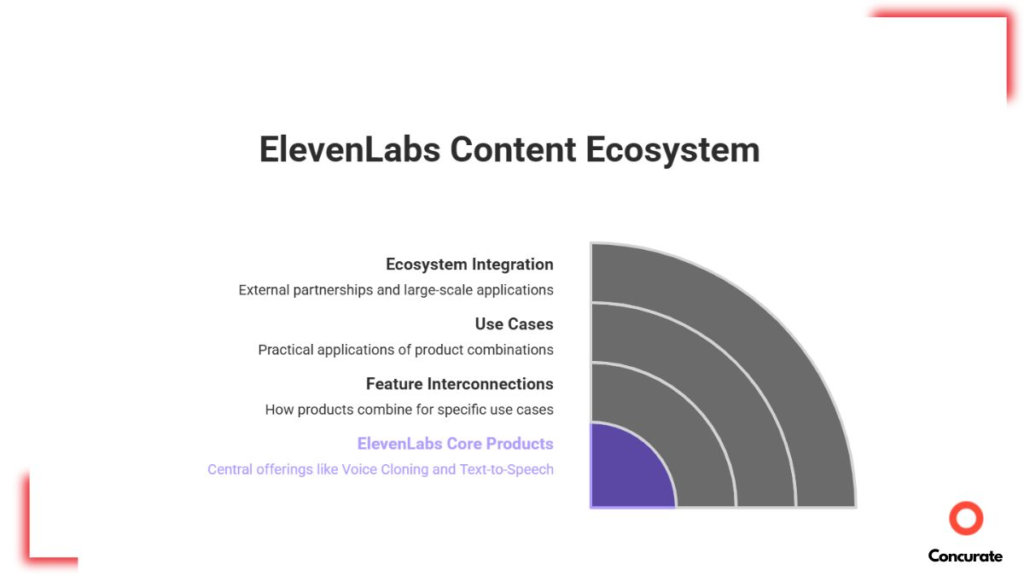
That’s a deliberate cross-selling strategy baked into their storytelling.
Each article blends product education, use-case narrative, and ecosystem proof — guiding readers from what it does to what else it can do.
This way, ElevenLabs turns curiosity into activation. Readers don’t feel sold to; they feel invited to explore.
That’s the hallmark of ElevenLabs’ content flywheel: every post builds context, deepens engagement, and quietly cross-sells the next product in line.
How Pricing Powers a Cross Selling Strategy
Even the pricing acts like a guided content funnel: each tier aligns with where the user is in the journey.
| Plan | Hook | What It Unlocks |
| Free | Try Text-to-Speech | Hook users emotionally with instant results |
| Starter ($5/mo) | Add Instant Voice Cloning | Entry-level personalization |
| Creator ($11/mo) | Unlock Professional Cloning + 50% off first month | Incentivizes upgrade via curiosity |
| Pro ($99/mo) | Studio-grade audio & usage-based billing | Expands capacity for serious creators |
| Enterprise | Multi-seat, low latency, managed dubbing | Cross-sells to enterprise use cases |
Every tier answers the same question at a different level:
“What can I do next?”
That’s the quiet brilliance of their design. They’re not just pricing access. They’re pricing progress.
That’s how you turn a one-time trial into a long-term relationship.
What SaaS CMOs Can Learn from ElevenLabs’ Cross Selling Strategy
If you’re building content for a SaaS product, ElevenLabs is a masterclass in how to turn user curiosity into compounding growth. Their product behaves like a story, each chapter pulling the user naturally into the next. That’s exactly how great SaaS content should work too.
1. Design Experiences, Not Pages
Your blog, feature pages, or help docs shouldn’t exist in isolation. Each piece should guide the reader toward what comes next. ElevenLabs’ journey, from demo to cloning to dubbing, mirrors the same principle in content: create connected pathways. Every article should answer one question and open another. That’s how you build exploration into your content architecture.
2. Sell Curiosity, Not Features
Most SaaS content talks about what a product does. Great content shows what’s possible because of it. ElevenLabs doesn’t say “You can clone your voice.” They make you want to hear yourself in another language. Curiosity converts better than capability. Use headlines, visuals, and stories that spark “Can I try this?” instead of “Here’s how it works.”
3. Make Success Shareable
User success is your most authentic distribution engine. When ElevenLabs users publish voices or dubbed content, they’re unintentionally promoting the product. Your content should work the same way, make templates, results, and frameworks easy to showcase. The moment your audience starts sharing outcomes instead of URLs, your reach multiplies organically.
4. Anchor Emotion to Progression
Retention isn’t about reminders but about resonance. ElevenLabs turns a technical process (voice cloning) into an emotional experience (“That’s my voice”). In content, this means pairing insights with identity. Don’t just educate, validate. Make your audience see themselves in your use cases, stories, and data. That’s how content becomes community.
5. Think Flywheels, Not Funnels
Funnels optimize for conversion. Flywheels optimize for momentum. Every piece of content should feed another: blogs into case studies, case studies into demos, demos into community. When your strategy compounds instead of concludes, your content stops being a marketing asset and starts being a conversion system.
So the next time you’re planning your content strategy, don’t just ask,
“How do we rank for this keyword?”
Ask instead: “How can our content guide users from one success to the next?”
Because that’s how ElevenLabs turned its product lineup, and its content, into a self-sustaining flywheel that keeps creators (and conversions) coming back.
Want to Build Your Own SaaS Content Flywheel?
We can help!
At Concurate, we help SaaS brands turn content into a growth engine. We don’t write blogs for clicks; we build content systems that connect your products, accelerate adoption, and quietly cross-sell through insight and design.
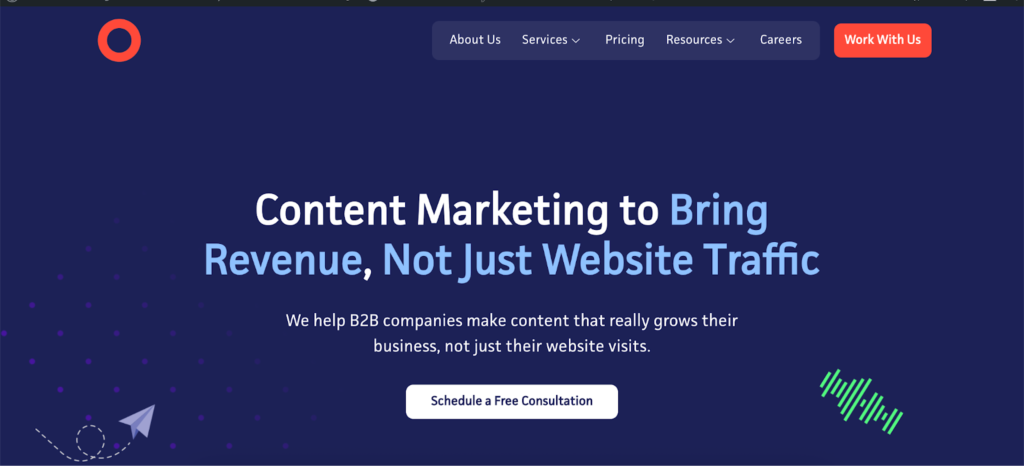
Ready to build a content flywheel that never stops spinning?
Book a strategy call with Concurate — and let’s make your content sell your ecosystem, not just your product.


